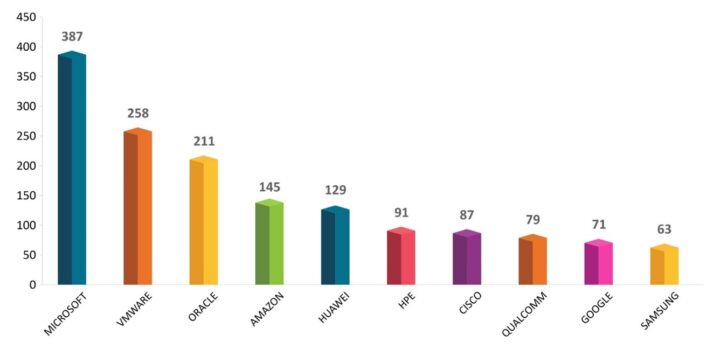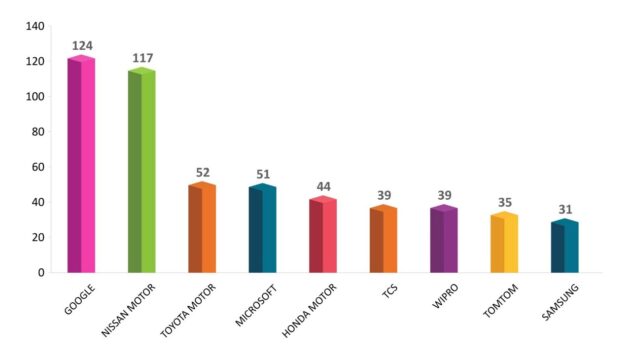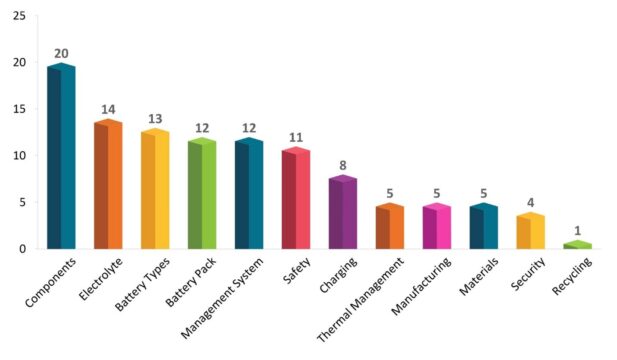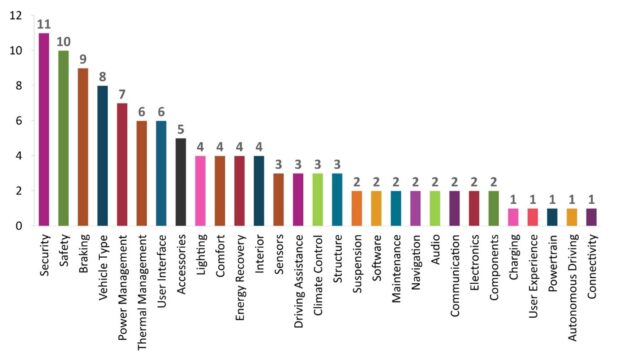Ola’s (ANI Technologies) recent move to expand into cloud and navigation/maps segments seems like a bold step forward. This move represents the ambition of new age Indian startups and Bharat to make a mark globally. But as the ride-hailing giant treads into these new territories, there’s a critical factor that could turn this opportunity into a potential nightmare.
In this article, let’s investigate Ola’s new ventures vis-a-vis the established competitors like Google, Amazon and others with strong IP protections in India, why Ola’s lack of IP protection might be a serious strategic misstep and what Ola can do to mitigate the situation right away without waiting for years. The article further takes example of Ola’s foray into maps and cloud to highlight the risks and bring forth strategies to mitigate these risks.
Ola’s Ambitious Expansion
Ola has set its sights on becoming more than just a ride-hailing service. By venturing into cloud space, Ola aims to enhance its operational efficiency, scalability, and data management capabilities, while also offering its cloud related services. In the maps and navigation space, Ola plans to provide India-specific precise, real-time routing and improved user experiences. On the surface, these moves signal a promising future filled with technological advancements and market expansion.
Yet, beneath this promising outlook lies a significant challenge: the intellectual property (IP) landscape, particularly the patents that market players own to protect their innovations in India and maintain their market dominance.
The IP-Rich Competitive Landscape
Ola is entering markets dominated by players with formidable IP arsenals. According to International Data Corporation (IDC), the public cloud services market in India was valued at $8.3 billion in 2023, with Microsoft Azure leading the market with a 25% share and AWS following with 15%. Giants like Microsoft and Amazon along with others not only lead in market share but also in patent holdings, which safeguard their innovations and market positions. The chart illustrates the patent ownership of the top 10 companies in the cloud segment in India.

Image source: Sagacious IP
Similarly, in maps and navigation, companies like Google, India’s market leader and Ola’s ride-hailing enabler, hold extensive patents that protect their cutting-edge navigation technologies and related location-based services. The chart illustrates the patent ownership of the top 10 companies in the maps and navigation segment in India. It clearly shows that the company Ola is aiming to confront with its navigation offering has outstanding IP support in India, which it can leverage at any time to assert its position and maintain its dominance.

Image source: Sagacious IP
Ola’s IP Profile
A deep dive into Ola’s portfolio reveals a nuanced picture of the company’s intellectual property (IP) landscape. While Ola’s competitors boast extensive IP portfolios, the company’s holdings in cloud and navigation segments are notably limited, highlighting potential challenges as Ola tries to establish itself in these IP-intensive markets.
Ola’s IP portfolio is divided between two of its entities: ANI Technologies and Ola Electric Mobility. To fully understand Ola’s IP profile, we will explore the patent holdings of these entities individually, as they reveal distinct aspects of Ola’s approach. ANI Technologies, as illustrated in the chart, holds a total of 111 active applications, with 45 granted patents. Of these, 33 patents are granted in the US – a market where Ola currently does not operate – and 12 are granted in its primary Indian market. This unusual distribution prompts questions about the strategic alignment of Ola’s IP portfolio with its business operations. The emphasis on US patents, despite the lack of current operations there, could signal a strategy for future expansions or a defensive stance against potential US-based litigation.

Image source: Sagacious IP
On the other hand, Ola Electric Mobility presents a more promising IP profile. Since its inception in 2017, the company has filed approximately 288 patent applications, with 280 currently active across 245 patent families and 96 granted patents in various countries. Notably, Ola Electric Mobility also holds 45 active WIPO applications, further illustrating the global relevance of these assets. This robust portfolio covers a broad spectrum of electric mobility technologies, indicating a well-thought IP strategy and potential for future growth. The technologies covered are primarily divided into two categories: Battery technologies and Vehicle technologies, as detailed in the following charts.

Image source: Sagacious IP

Image source: Sagacious IP
It is also worth noting that patent applications typically take about 18 months to publish, suggesting a positive outlook for Ola’s future IP assets.
Overall, while Ola’s IP portfolio shows some strategic gaps, particularly in cloud and navigation technology segments, its extensive patent activity and international applications through Ola Electric Mobility highlight a proactive approach to securing technological advancements. Addressing these gaps and leveraging the strengths in electric mobility will be crucial for Ola as it seeks to establish itself in new markets and capitalize on its expansion efforts. By aligning its IP strategy across all entities, Ola can better navigate the competitive landscape and enhance its position in the global technology arena.
Patent Litigation in Cloud and Navigation
In the fields of cloud and navigation technologies, patent litigation highlights the critical importance of a robust IP strategy. An analysis of active patent families in the maps and cloud space in India shows that the counterparts of 68 cloud-related patent families and 12 navigation-related patent families are currently involved in legal disputes across multiple jurisdictions.
In both technological areas, the plaintiffs include both Patent Assertion Entities (PAEs) and operating companies, with a notably higher involvement of PAEs in litigation. This trend is prevalent across Information and Communication Technology (ICT) sectors, where PAEs often play a significant role in driving patent disputes.
For companies venturing into new market areas, such as Ola, understanding the litigation landscape is essential. With increasing litigation across technology sectors in India and substantial damage awards from the honorable Delhi High Court, the frequency of disputes is expected to rise. As more IP owners seek to monetize their assets, Indian startups must meticulously plan their intellectual property strategies to survive and thrive in this competitive environment.
The Critical Role of Intellectual Property
Intellectual property is the cornerstone of technological innovation and competitive strategy. Patents protect novel ideas, deter competitors, and provide opportunities for licensing and revenue generation. Companies with strong IP portfolios can leverage their patents defensively to avoid litigation or offensively to assert their market dominance. Without a strong IP foundation, new entrants like Ola face heightened risks.
The Challenges with Limited IP
- Litigation Risks: In a market where competitors are armed with extensive patents, Ola’s lack of IP protection in these new segments makes it an easy target for patent infringement lawsuits. These legal battles can be costly, time-consuming, and disruptive, potentially crippling Ola’s new initiatives.
- Market Competitiveness: Competing against companies with strong IP portfolios puts Ola at a significant disadvantage. Competitors can innovate freely while Ola must tread carefully to avoid infringing existing patents, limiting its ability to offer competitive, cutting-edge solutions.
- Investor Confidence: Investors look for companies with strong IP portfolios as indicators of innovation and market readiness. Given Ola’s upcoming IPO, a weak IP position could deter potential investors, limiting its access to the capital needed to drive its new ventures.
- Strategic Partnerships: Building strategic alliances without strong IP can be challenging. Potential partners and customers may hesitate to collaborate and subscribe to Ola, fearing the risk of IP-related issues and litigation.
Recommendations for Ola and Other Companies in Similar Situations
- Acquiring Strategic Patents: Buy patents in India/ other countries that their top competitors may infringe for better outcomes if Ola is threatened. For example, if Ola acquires quality patents in the US related to its competitor’s products, Ola could leverage these patents as a defense mechanism. Suppose Ola acquires a patent in the US for an advanced user interface technology used in mobile apps, and Uber uses a similar technology. In this scenario, if Uber sues Ola for patent infringement in another area, Ola could counter-sue or negotiate a cross-licensing agreement using these acquired assets. By holding critical patents that competitors might infringe, Ola can better protect its market position and mitigate litigation risks.
- Impact on IPO and Necessary Steps: The strength of a company’s IP portfolio is a significant factor in IPO valuation, particularly for companies operating in these market areas. For Ola, a weak IP position could lead to a lower valuation and reduced investor confidence. To address this, Ola should:
- Clearly communicate its IP strategy to potential investors, highlighting ongoing efforts to strengthen its IP portfolio.
- Provide detailed plans for acquiring strategic patents and investing in R&D.
- Showcase collaborations with IP experts and legal advisors to navigate the complex patent landscape. By taking these steps, Ola can reassure investors of its commitment to IP protection, enhancing its attractiveness and valuation during the IPO process.
- Organically Increasing Quality Patent Portfolio: What can they do to organically increase their quality patent portfolio? Innovation management and strategic hiring could be the key:
o Innovation Management: Implement structured innovation management processes to identify, develop, and protect new technologies. Encourage internal teams to innovate and provide incentives for patent filings.
o Collaborations and Partnerships: Form strategic partnerships with universities, research institutions, and startups to co-develop new technologies and share IP rights. This can help in generating high-quality, patentable innovations.
o Hiring Established Inventors: Actively recruit established inventors and patent holders in key areas of cloud and navigation from India and other jurisdictions of interest. These experts can drive internal innovation and contribute to a robust IP portfolio.
o Internal R&D Investments: Significantly increase investments in R&D to foster a culture of innovation and continuous technological advancement. This approach will organically enhance the quality and quantity of Ola’s patent portfolio over time.
Final Thoughts
Ola’s expansion into cloud and navigation/ maps presents both opportunities and challenges. Addressing the IP challenges is crucial not only for operational success but also for a successful IPO. By strategically acquiring patents, effectively communicating its IP strategy, and investing in organic growth through innovation management and strategic hiring, Ola can strengthen its IP position. This proactive approach will help mitigate risks, attract investors, and support sustainable growth in the competitive technology landscape.
For other companies in similar situations, addressing IP challenges is equally critical. By following similar strategies of acquiring strategic patents, communicating IP plans effectively, and focusing on innovation and strategic hiring, these companies can also enhance their IP positions, attract investors, and achieve sustainable growth in their respective markets.
The guest contributors are part of Sagacious IP, an Intellectual Property research firm that supports the worldwide IP community including Large Corporations, Small & Mid-size Corporations, IP law firms, Licensing Firms, and Universities. Any opinions expressed in this article are strictly those of the authors.

Tarun Kumar Bansal (President) Sagacious IP

Mudasir Ibn Bashir (Project Manager, ICT Business Development) Sagacious IP












